Discover 15 hidden attractions, cool sights, and unusual things to do in Iceland. Don't miss out on these must-see attractions: Hallgrímskirkja (Reykjavík), Laugavegur (Reykjavík) or Tjörnin (Reykjavík).
Below, you can find the list of the most amazing places you should visit in Iceland.
Table of Contents
Hallgrímskirkja, Reykjavík
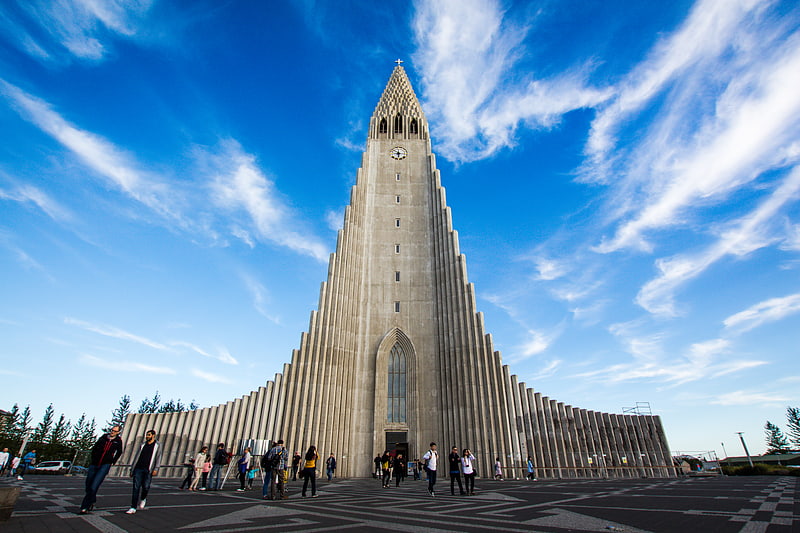
Modern cathedral with a striking tower. Hallgrímskirkja is a Lutheran parish church in Reykjavík, Iceland. At 74.5 metres tall, it is the largest church in Iceland and among the tallest structures in the country. Known for its distinctively curved spire and side wings, it has been described as having become an important symbol for Iceland's national identity since its completion in the 1980s. The church is named after the Icelandic poet and cleric Hallgrímur Pétursson, author of the Passion Hymns.[1]
Address: Hallgrímstorg 101, 101 Reykjavík (Miõborg)
Laugavegur, Reykjavík
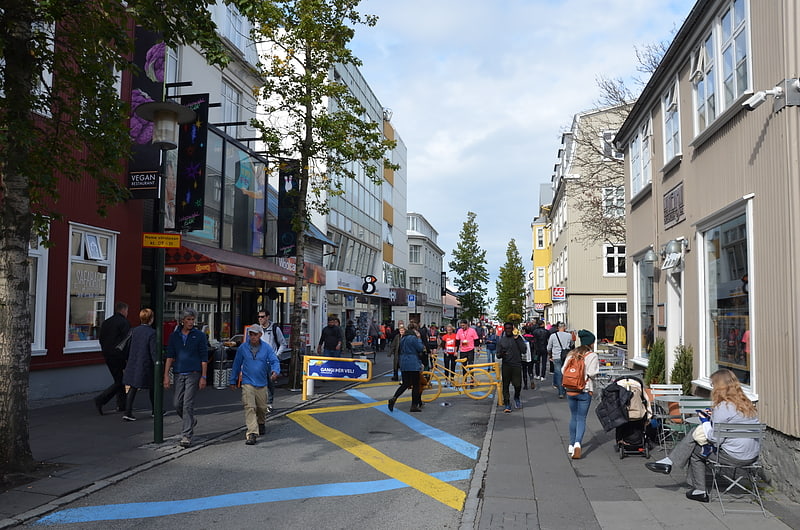
Street in Reykjavik, Iceland. Laugavegur is the primary commercial artery of downtown Reykjavík, Iceland and one of the oldest shopping streets. The name means "wash road", as it used to lead to the hot springs in Laugardalur where in olden times the women of Reykjavík took their laundry for washing.
It was constructed in 1885 as a result of town council's decision. It experienced economic setbacks mostly because shopping malls opened elsewhere, most notably Kringlan that opened in 1987 and Smáralind that opened in 2001. It maintains the charm of a historical shopping street and is still home to the more exclusive stores in Iceland.
It is also home to many bars, nightclubs and restaurants. On Friday and Saturday nights, the street is often filled with people all night long.[2]
Tjörnin, Reykjavík
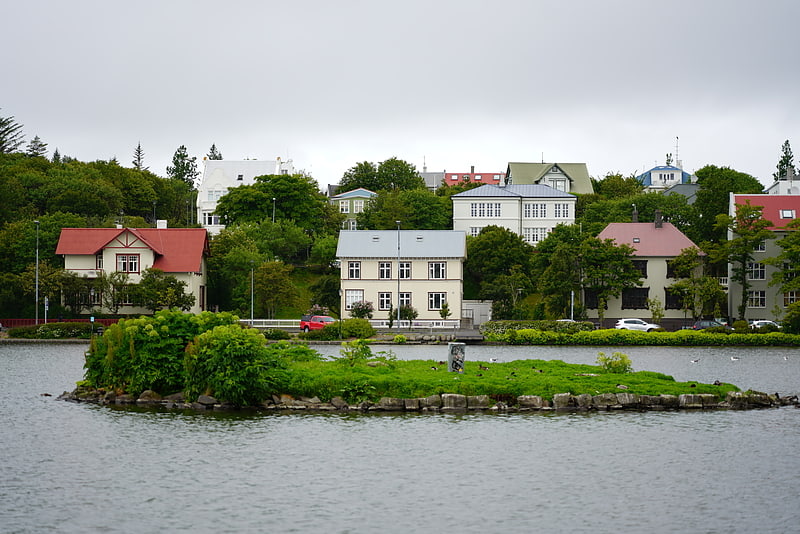
Small urban lake with swans and geese. Tjörnin is a small, prominent lake in central Reykjavík, the capital of Iceland. Most visitors to the city pass along its shore, as it is situated in the city centre next to the Reykjavik City Hall and several museums. Tjörnin means "the lake" or "the pond".
Feeding the birds on the lake shores is a popular pastime, so much that it has been referred to as "the biggest bread soup in the world".[3]
The Exploration Museum, Húsavík
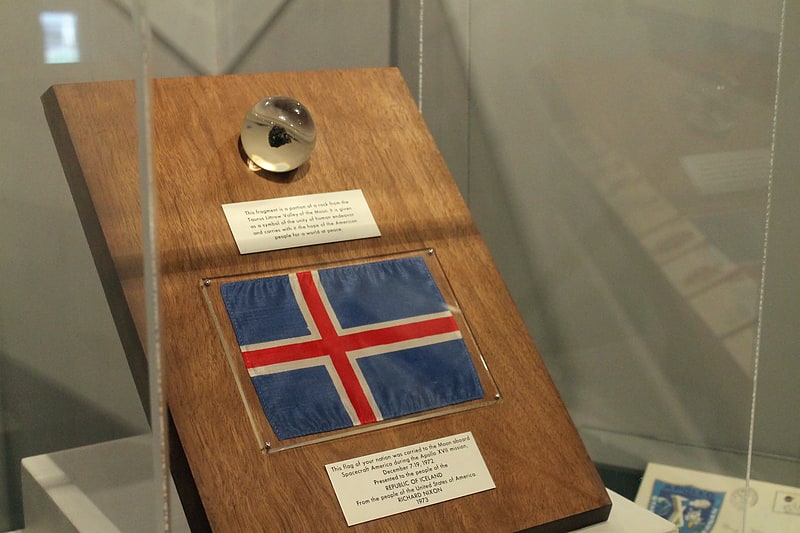
Museum in Húsavík, Iceland. The Exploration Museum is dedicated to the history of human exploration, from the early explorers to the exploration of space. The museum is located in the center of Húsavík in North Iceland, 50 kilometres from the Arctic Circle. The museum was founded in 2011 and formally opened in 2014 by the President of Iceland.
The main exhibition room features photographs and artifacts from the Apollo astronaut training program near Húsavík in 1965 and 1967. The second exhibition room features the history of Viking exploration. Upstairs is dedicated to the exploration of the polar regions and the races to the north and south poles. The basement details expeditions which travelled underground and beneath the sea.[4]
Address: Hedinsbraut 3, 640 Husavik
Húsavíkurkirkja, Húsavík
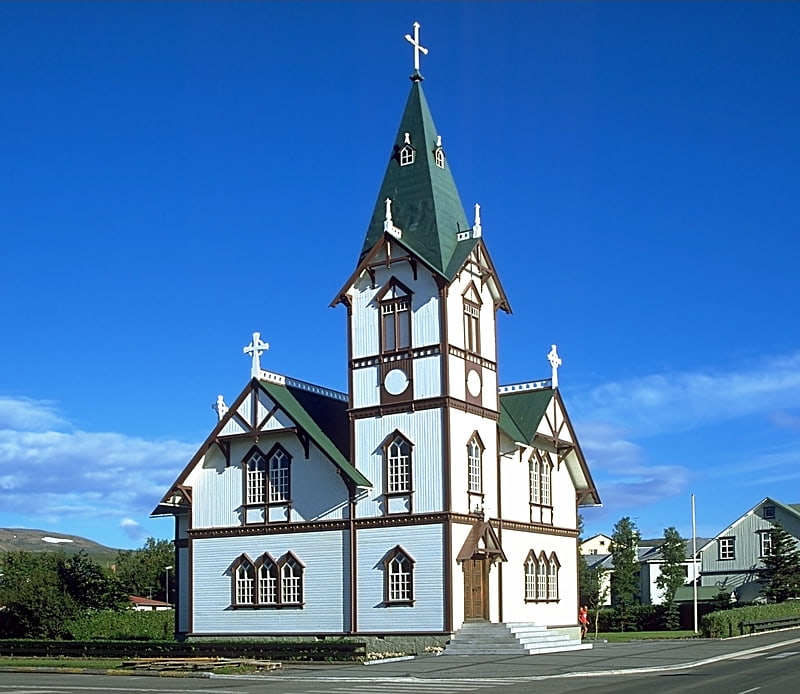
The Húsavíkurkirkja is an early 20th century church in Húsavík, Iceland. The wooden church was built in 1907 by Icelandic architect Rögnvaldur Ólafsson, who designed the building in line with the Swiss chalet style. The church hosts marriages, baptisms, funerals, and an annual general meeting.[5]
Laugavegur, Landmannalaugar

Laugavegur is a hiking trail in South Iceland. It is the most popular trail in Iceland, with around eight thousand people hiking it every summer. In 2012, National Geographic listed it as one of the twenty best trails in the world.
Laugavegur runs from the hot springs area of Landmannalaugar to the glacial valley of Þórsmörk. It is noted for the wide variety of landscapes on its path. The route is typically completed over four days, North to South, with stops at the mountain huts of Hrafntinnusker, Álftavatn, and Emstrur. At least three rivers must be forded during the walk. It is possible to combine the trek with a hike over the Fimmvörðuháls route from Þórsmörk to Skógar.
The Laugavegur Ultramarathon has been held annually on the trail since 1997.[6]
Address: hot springs area of Landmannalaugar to the glacial valley of Porsmork, Landmannalaugar
Húsavík Whale Museum, Húsavík
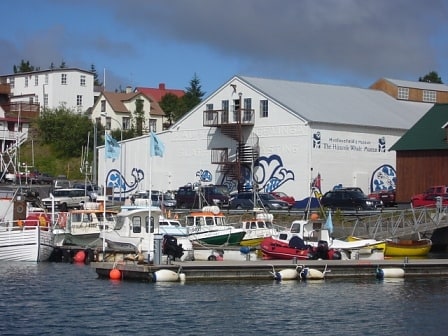
Also known as: Hvalasafnið á Húsavík
Museum in Húsavík, Iceland. The Húsavík Whale Museum is a non-profit organization established in 1997. The Húsavík Whale Museum is situated in Húsavík, a small town in north east Iceland, on the shores of Skjálfandi Bay, just below the Arctic Circle at 66° N. It began as a small exhibit on whales in the town's hotel in summer 1997. Shortly after that, the exhibition was moved into the newly renovated part of the baiting shed at the harbor and the shareholding business “Húsavík Whale Centre ehf” was established. Due to the growing popularity, it was obvious that a larger and more suitable building was needed after only 3 years. In 2000, the town's old slaughterhouse was purchased, remodeled, and officially opened in June 2002. In 2004, the shareholding business turned into a non-profit organization and was renamed “The Húsavík Whale Museum.” By 2005, a comprehensive exhibition on the ecology of whales was added.[7]
Address: Hafnarstett 1, 640 Husavik
Akureyri Botanical Garden, Akureyri
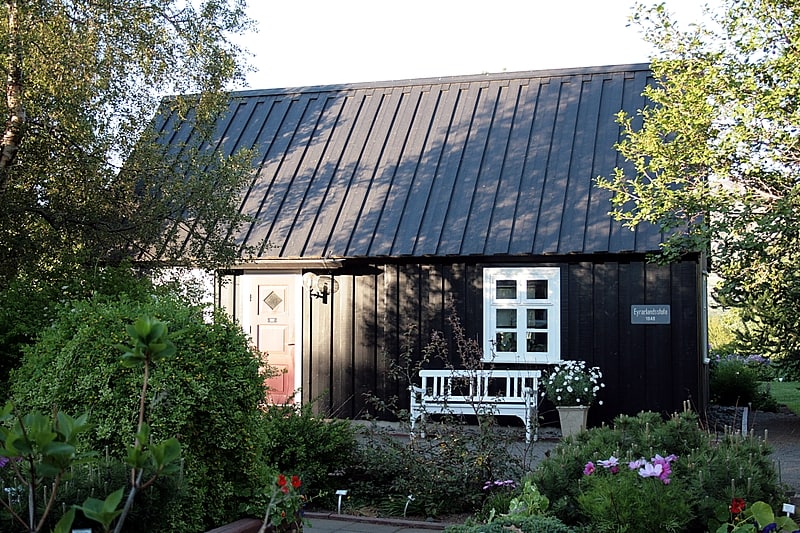
Also known as: Lystigarður Akureyrar
City park in Akureyri, Iceland. The Akureyri Botanical Garden is located at 65°40′30″N 18°05′36″W and positioned on the west side of the inland end of the fjord Eyjafjörður at about 45 metres elevation. It is located in the southern part of the city of Akureyri in Northern Iceland, 50 kilometres south of the Arctic Circle. It is remarkable for its extreme location.
In 1910, women from Akureyri founded the Park Association to beautify their city. The previous year the city had given them a hectare of land. The garden, the first public park in Iceland, was headed until 1953 by the Park Society. During this time the garden area increased to 3.6 hectares. Besides being a place of peace and tranquility the garden is a place for scientific research. It has proven that shrubs, trees and other plants can survive on the edge of the Arctic. Jón Rögnvaldsson's plant collection was purchased by the city in 1957. Rögnvaldsson was a leading force in the garden many years, along with Margarethe Schiöth. Both of them are represented by busts in the garden, along with Akureyri clergyman Matthias Jochumsson, the poet of the Icelandic national anthem. Besides arctic plants, those from the temperate zones and high mountains are grown. Icelandic plants are represented by about 400 species in the southeastern corner of the garden. By the end of 2007, there were about 7000 species. In the garden there are public toilets. The entrance to the garden is free, and it is always open. The garden contains a few wooden houses, of which Eyrarlandsstofa is one of the oldest in Akureyri.[8]
Address: Hafnarstræti 57, Akureyri
Nonni's House, Akureyri
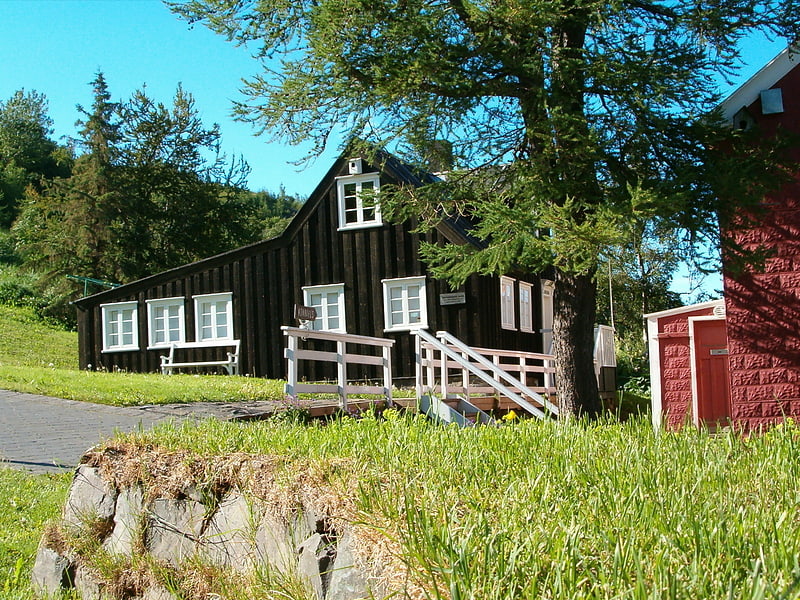
Nonni's House is a museum in the Akureyri municipality in Iceland. The small wooden house, built around 1850, is one of the oldest houses in Akureyri. It was the home of the well known children's author and Jesuit priest Jón Sveinsson; also known as "Nonni". The museum was started in 1957 by the Zonta Club but they gave it to the Akureyri municipality in 2008.[9]
Akureyrarkirkja, Akureyri

Landmark Lutheran church with an organ. Akureyrarkirkja or The Church of Akureyri is a prominent Lutheran church at Akureyri in northern Iceland. Located in the centre of the city, it was designed by Guðjón Samúelsson and completed in 1940.
Akureyrarkirkja contains a notably large 3200-pipe organ. The bas-reliefs on the nave balcony are by sculptor Ásmundur Sveinsson (1893–1982). The altarpiece dates to 1863 and was designed by Danish artist Edvard Lehmann (1815–1892). The windows were designed and made by J. Wippel & Co. of Exeter, Devon in Britain. The Italian white marble baptismal font is made by Florentine sculptor Corrado Vigni (1888–1956). The angel baptismal font is a replica of a work by noted Danish sculptor Bertel Thorvaldsen (1770–1844). The original work is situated at Copenhagen Cathedral (Vor Frue Kirke).
In 2017, the church was vandalized, and incurred 20 million ISK in damage.[10]
Frostastaðavatn, Landmannalaugar
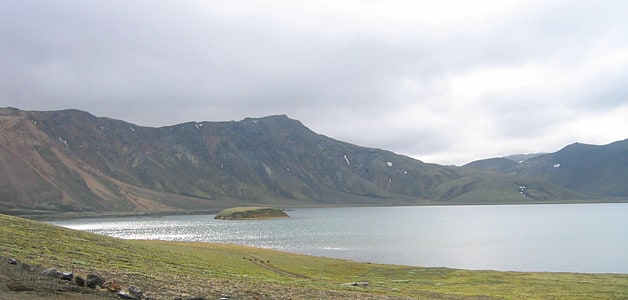
Lake in Iceland. Frostastaðavatn is a lake in Iceland. It is situated in the Highlands of Iceland, not far from the famous mountains of Landmannalaugar and the volcano Hekla.
Evidence of volcanism shows around this lake; for example in the famous mixed lava flows from the 1477 combined eruptions of the Torfajökull and Bárðarbunga volcanic systems reaching down to the shore (lava flows of rhyolitic as well as basaltic composition).
Two highland roads run along its shore, Fjallabaksleið nyrðri (F 208) and Landmannaleið (F 225).[11]
Bláhnjúkur, Landmannalaugar
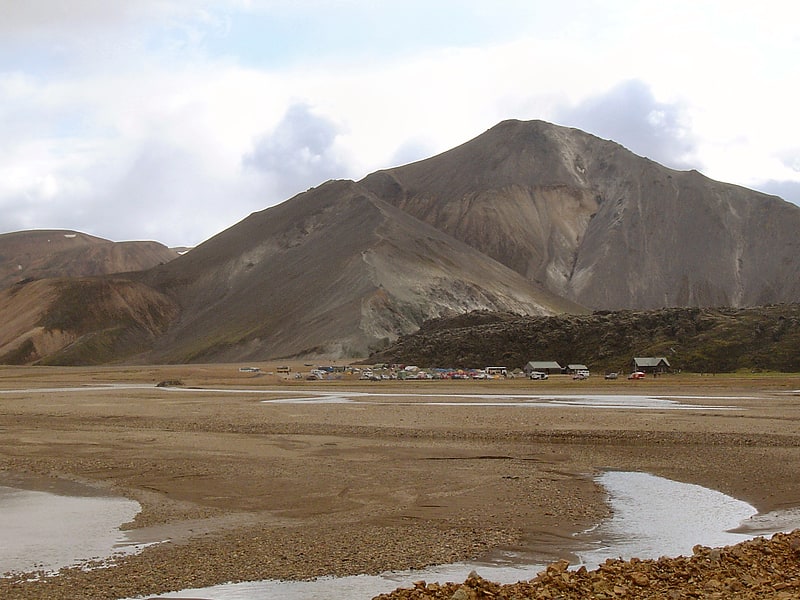
Volcano in Iceland. Bláhnjúkur is a volcano in the south of Iceland. Its height is 940 m.
Its name translates to blue peak in English. This comes from the blue-black colour of its sides. The colour is due to volcanic ash and lava flows.
The mountain is situated in Landmannalaugar, a natural park near Hekla. It lies next to the volcano Brennisteinsalda.
A hiking trail leads up to the top of the mountain from which, in good conditions, five glaciers are visible.
The best way to get to the peak is on road number F 208. The hike is considered easy and takes 1–2 hours round-trip.[12]
Askja, Vatnajökull National Park
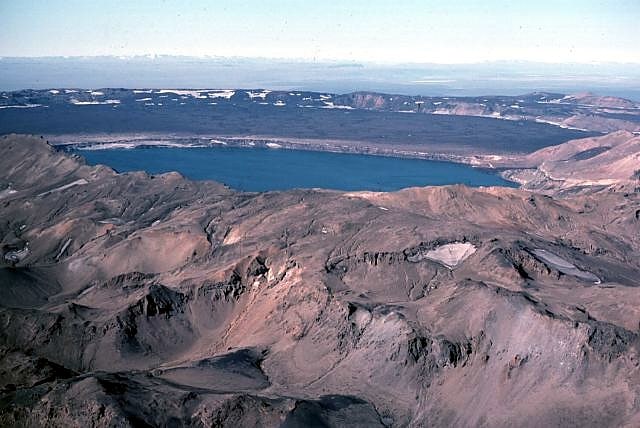
Volcano in Iceland. Askja is an active volcano situated in a remote part of the central highlands of Iceland. The name Askja refers to a complex of nested calderas within the surrounding Dyngjufjöll mountains, which rise to 1,510 m, askja meaning box or caldera in Icelandic.[13]
Breiðárlón, Vatnajökull National Park
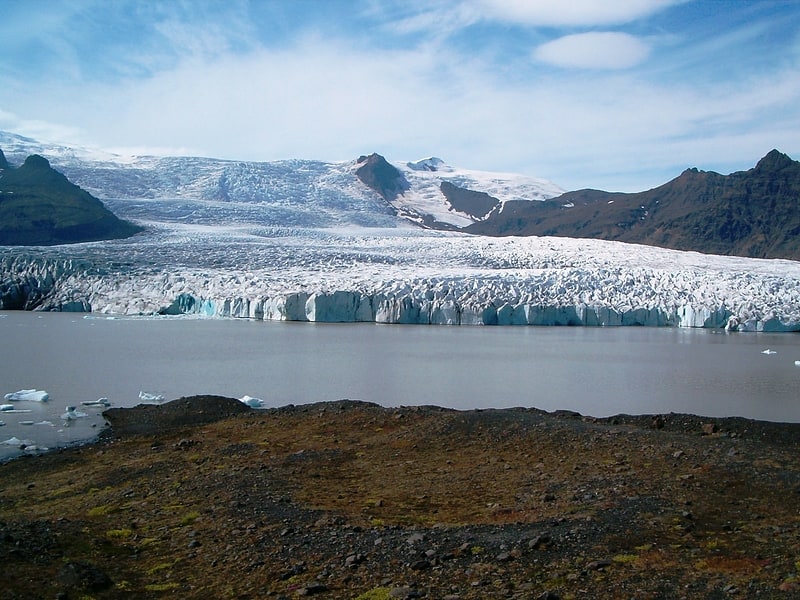
Lake in Iceland. Breiðárlón is a glacier lake at the south end of the Icelandic glacier Vatnajökull.
The glacier calving into the lagoon is a part of Vatnajökull National Park and the better known glacier lake Jökulsárlón is not far from there. From Breiðárlón a little river flows into the Fjallsárlón.[14]
Eldgjá, Vatnajökull National Park
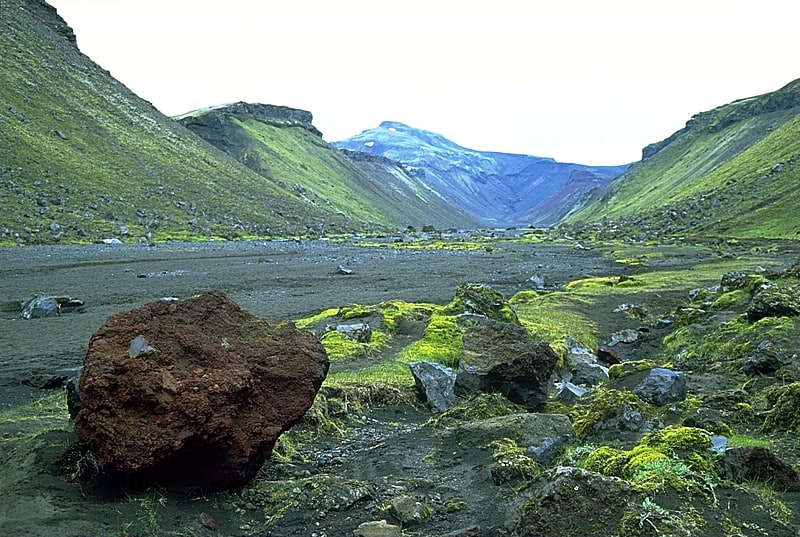
Volcano in Iceland. Eldgjá is a volcano and a canyon in Iceland. Eldgjá and the Katla volcano are part of the same volcanic system in the south of the country.
Situated between Landmannalaugar and Kirkjubæjarklaustur, Eldgjá is the largest volcanic canyon in the world, approx. 40 km long, 270 m deep and 600 m wide at its greatest.[15]